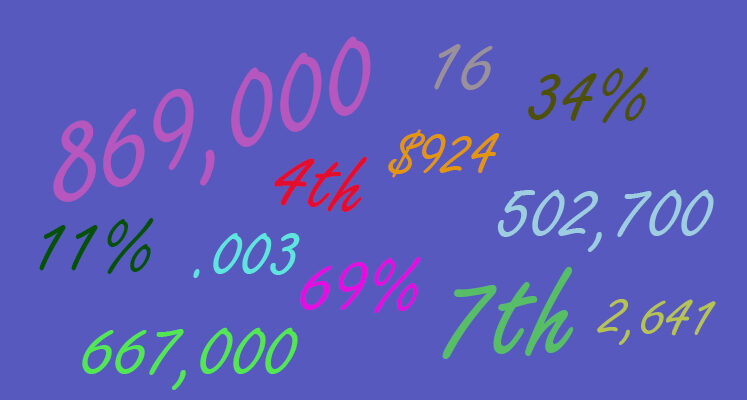According to U.S. Census Bureau estimates, between July 1, 2022, and July 1, 2023, El Paso County’s population grew from 867,239 to 869,880, a difference of 2,641. This represents a growth rate of three tenths of 1 percent, or .003.
In other news, “El Paso wages are the fourth lowest among the 26 largest Texas counties and seventh lowest among the 360 largest counties in the United States.”
Our weekly average wages are $924 a week, and the national average is $1,334. El Paso’s weekly wages are 69% of the national average.
Obviously we have to do something. But Triple A baseball and water parks aren’t the answer.
The El Paso Police Department celebrated the graduation of 16 new police officers.
. . .
EPPD spokesperson Detective Judy Oviedo who said that for the graduates, Friday will, “probably [be] one of the best days they’ll remember in their career.”
I guess she means it only gets worse.
I understand that most popular major at UTEP is Criminal Justice, yet only 16 people wanted to be an El Paso cop. Seems like a branding issue.
“Eaton Plan Manager in El Paso Alex Mora said Eaton looked at Albuquerque, Phoenix, Dallas and El Paso but El Paso beat those cities because of how close it is to the Eaton plant in Juarez.”
So it wasn’t Triple A baseball and water parks? How surprising.
This West Texas border town — with more than 677,000 residents, most of them Mexican American — is in a low voter-turnout county in a low voter-turnout state.
The county had 502,700 registered voters in the 2024 primaries, but only about 11% cast a ballot. That’s more than 7% lower than the last presidential primaries in 2020, and good for the second worst turnout rate in the state. In 2022 general midterm elections, 34% of El Paso’s registered voters cast a ballot, about 10% less than in the 2018 general midterms.
Over the last several elections, El Paso County has consistently had among the lowest voter turnout among Texas’ most populous counties. During the 2024 primary, only 11% of the county’s registered voters cast a ballot, the second lowest among the state’s 254 counties. Below are historic turnout rates for the 20 most populated counties in Texas, which includes El Paso County.


The question is always, compared to what and compared to when? When I came here in 1996, the percent of adults with a 4-year degree or better was around 15%, behind the US average as it still is, though it has improved to 25% now (vs US 34%). Ditto income and most other positive stats. El Paso is an immigrant area then and now and the migrants do not come here fully equipped in education and job skills. That is a process of time and assimilation, generational even.
El Paso is not losing population or declining in other positive stats but rather improving. The water utility reports that they connect about 2,000 new meters annually. Additionally the population is younger here than average US. Then there is the access to Mexico, in spite of its problems. Mexico now the US largest trading partner, having displaced China that hardly has our welfare in mind.
The city’s plans are not so much to attract another Eaton or Amazon but to accommodate the population now here that is maturing educationally and economically, IMO. To give them a reason to stay and jobs they want to work in. Our job as activists is to see that these plans do not displace the people here now or make their lives any worse.
I disagree with several points in your comment.
A 4-year degree these days isn’t what it was in 1996, or 1981, when I received my 4-year degree, in 6 years. UTEP accepts everyone and works hard to graduate them all.
From an article on Grade Inflation on WSJ.com:
The City’s plans are not to accommodate the population now here. The City’s plans are all theater to ensure that the bureaucrats keep their jobs and the politicians get re-elected. Pose and posture. The politicians support their friends and donors. None of them are willing to make all the hard decisions, like increasing Impact Fees, or killing the arena. If El Paso Water is connecting 2,000 new meters annually, that’s sprawl.
I think Mayor Oscar Leeser and District 1 Representative Brian Kennedy are genuinely interested in long term benefits to El Pasoans. The rest of City Council is suspect, but I am holding out hope.
I imagine the pols are pleased that voter participation has declined. That leaves them fewer voters to hoodwink, and they are more homogeneous than the population as a whole.
If you don’t believe it can change or that your work matters not, why get out of bed in the morning? I remain a cynical optimist.